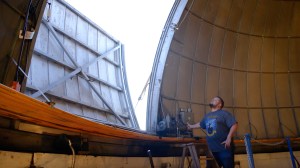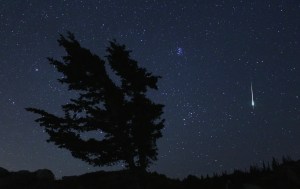Scientists find that cometary dust affects interpretation of spacecraft measurements, reopening the case for comets like 67P as potential sources of water for early Earth.
Researchers have found that water on Comet 67P/Churyumov–Gerasimenko has a similar molecular signature to the water in Earth’s oceans. Contradicting some recent results, this finding reopens the case that Jupiter-family comets like 67P could have helped deliver water to Earth.
Water was essential for life to form and flourish on Earth and it remains central for Earth life today. While some water likely existed in the gas and dust from which our planet materialized around 4.6 billion years ago, much of the water would have vaporized because Earth formed close to the Sun’s intense heat. How Earth ultimately became rich in liquid water has remained a source of debate for scientists.
Research has shown that some of Earth’s water originated through vapor vented from volcanoes; that vapor condensed and rained down on the oceans. But scientists have found evidence that a substantial portion of our oceans came from the ice and minerals on asteroids, and possibly comets, that crashed into Earth. A wave of comet and asteroid collisions with the solar system’s inner planets 4 billion years ago would have made this possible.
While the case connecting asteroid water to Earth’s is strong, the role of comets has puzzled scientists. Several measurements of Jupiter-family comets — which contain primitive material from the early solar system and are thought to have formed beyond the orbit of Saturn — showed a strong link between their water and Earth’s. This link was based on a key molecular signature scientists use to trace the origin of water across the solar system.
This signature is the ratio of deuterium (D) to regular hydrogen (H) in the water of any object, and it gives scientists clues about where that object formed. Deuterium is a rare, heavier type — or isotope — of hydrogen. When compared to Earth’s water, this hydrogen ratio in comets and asteroids can reveal whether there’s a connection.
Because water with deuterium is more likely to form in cold environments, there’s a higher concentration of the isotope on objects that formed far from the Sun, such as comets, than in objects that formed closer to the Sun, like asteroids.
Measurements within the last couple of decades of deuterium in the water vapor of several other Jupiter-family comets showed similar levels to Earth’s water.
“It was really starting to look like these comets played a major role in delivering water to Earth,” said Kathleen Mandt, planetary scientist at NASA’s Goddard Space Flight Center in Greenbelt, Maryland. Mandt led the research, published in Science Advances on Nov. 13, that revises the abundance of deuterium in 67P.
But in 2014, ESA’s (European Space Agency) Rosetta mission to 67P challenged the idea that Jupiter-family comets helped fill Earth’s water reservoir. Scientists who analyzed Rosetta’s water measurements found the highest concentration of deuterium of any comet, and about three times more deuterium than there is in Earth’s oceans, which have about 1 deuterium atom for every 6,420 hydrogen atoms.
“It was a big surprise and it made us rethink everything,” Mandt said.
Mandt’s team decided to use an advanced statistical-computation technique to automate the laborious process of isolating deuterium-rich water in more than 16,000 Rosetta measurements. Rosetta made these measurements in the “coma” of gas and dust surrounding 67P. Mandt’s team, which included Rosetta scientists, was the first to analyze all of the European mission’s water measurements spanning the entire mission.
The researchers wanted to understand what physical processes caused the variability in the hydrogen isotope ratios measured at comets. Lab studies and comet observations showed that cometary dust could affect the readings of the hydrogen ratio that scientists detect in comet vapor, which could change our understanding of where comet water comes from and how it compares to Earth’s water.
“So I was just curious if we could find evidence for that happening at 67P,” Mandt said. “And this is just one of those very rare cases where you propose a hypothesis and actually find it happening.”
Indeed, Mandt’s team found a clear connection between deuterium measurements in the coma of 67P and the amount of dust around the Rosetta spacecraft, showing that the measurements taken near the spacecraft in some parts of the coma may not be representative of the composition of a comet’s body.
As a comet moves in its orbit closer to the Sun, its surface warms up, causing gas to release from the surface, including dust with bits of water ice on it. Water with deuterium sticks to dust grains more readily than regular water does, research suggests. When the ice on these dust grains is released into the coma, this effect could make the comet appear to have more deuterium than it has.
Mandt and her team reported that by the time dust gets to the outer part of the coma, at least 75 miles from the comet body, it is dried out. With the deuterium-rich water gone, a spacecraft can accurately measure the amount of deuterium coming from the comet body.
This finding, the paper authors say, has big implications not only for understanding comets’ role in delivering Earth’s water, but also for understanding comet observations that provide insight into the formation of the early solar system.
“This means there is a great opportunity to revisit our past observations and prepare for future ones so we can better account for the dust effects,” Mandt said.
By Lonnie ShekhtmanNASA’s Goddard Space Flight Center, Greenbelt, Md.
Share
Details
Related Terms
Comets
Goddard Space Flight Center
Planetary Science
Planetary Science Division
Rosetta
Science Mission Directorate
The Solar System





